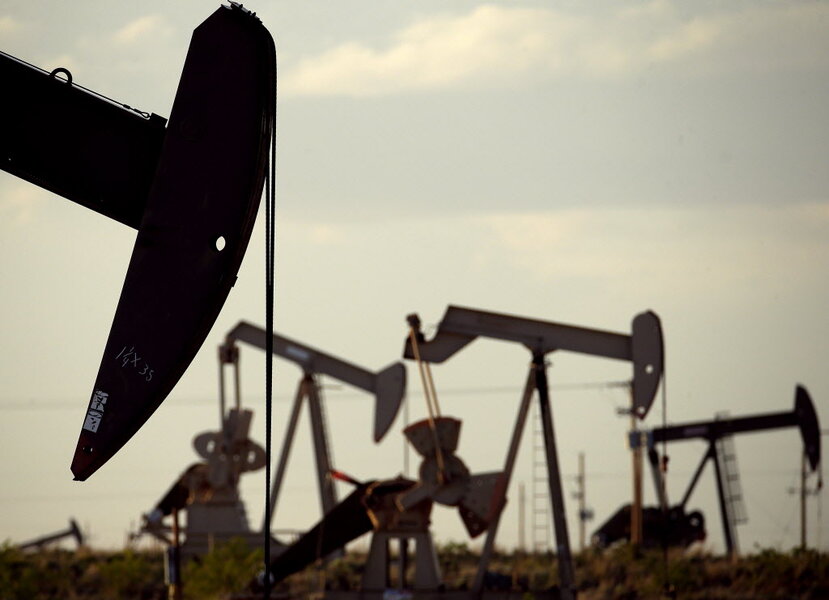Can US oil survive rising debt?
Loading...
The financial pressure on indebted oil and gas companies continues to mount, putting them in a bind as they try to mend their deteriorating balance sheets.
As their debt rises, drillers have had to divert more of their operating cash flow to servicing that debt. Or, put another way, as cash flow declines, a greater share of those resources are swallowed up by debt payments.
According to an analysis by the EIA, a group of 44 onshore oil and gas operators, responsible for 2.7 million barrels of oil production, are increasingly struggling to deal with falling oil prices. Between July 2014 and June 2015, an estimated 83 percent of the operating cash flow from these companies is dedicated for debt payments.
As the oil bust got underway late last year and in early 2015, oil companies had options. They could cut spending, take on new debt, issue new shares, or sell assets, to name a few.
In the first half of this year, the U.S. shale industry raised an estimated $44 billion in fresh debt and equity. Companies could roll over or refinance debt, taking on new loans in order to retire old ones. In a low-interest rate environment, lenders were very willing to do this. More importantly, in the first and second quarter of 2015, many lenders expected oil prices to rebound.
That optimism about oil prices has all but vanished at this point. As a result, it is becoming increasingly difficult for indebted companies to secure fresh loans – interest rates for high-risk companies are becoming prohibitively expensive. According to the EIA, the bond yields for energy companies with a credit rating in junk territory have shot above 11 percent, as the bond markets start to steer clear of high-yield energy debt. Debt and equity markets are all but shut off for distressed companies.
Without the ability to raise cash from debt or equity, rising debt payments and shrinking revenues put these companies in a very difficult situation. As debt payments overwhelm cash flow, cuts must be made elsewhere. They can slash capital expenditures (and they are), but that will lead to a decline in oil production, hurting future growth prospects. They can sell off assets (and they are), which helps raise cash. Those are just one-off events, however, and selling off oil fields can also slash a company’s production.
A company can hedge their oil production at a certain price, and many did so last year, which offered a degree of protection through much of 2015. But as those hedges expire, new hedging positions can only be secured at today’s prices. So that isn’t even really an option to deal with the precarious financial position companies find themselves in today.
For the smaller, more distressed shale companies, options are dwindling. Another round of credit redeterminations is underway. With the value of their assets a fraction of what they once were, lenders will slash the borrowing base for indebted shale companies. That could lead to a liquidity crisis for some, as they can no longer stay above water. Samson Resources Corp., an Oklahoma-based driller, filed for chapter 11 bankruptcy on September 16, the latest victim of the oil bust.
According to the Wall Street Journal, the default rate for energy companies jumped to 4.8 percent in the last few months, the highest level since 1999. For the sub-segment of exploration companies, the default rate is 8.5 percent. This compares to an average U.S. corporate default rate of just 2.9 percent. But with some companies set to lose their access to credit in the coming weeks, the default rate could climb.
The oil majors are not in such a precarious position. They have the size to ride out the storm, and they are in no danger of losing the faith of the debt or equity markets anytime soon. Still, they are suffering too. Moody’s says that the oil majors could see cash flows shrink by 20 percent this year. More cuts to spending, more asset sales, and more debt issuance are likely. As debt mounts, dividends could be in the line of fire, despite assurances from the majors that they will protect them at all cost.
Of course, the depth of the pain all depends on how long oil prices stay low. The oil majors are no doubt hoping that the weaker companies are forced out of the market, and the ongoing production declines will lead to a rebound in prices. Smaller companies might not survive, but the majors will live to fight another day.





